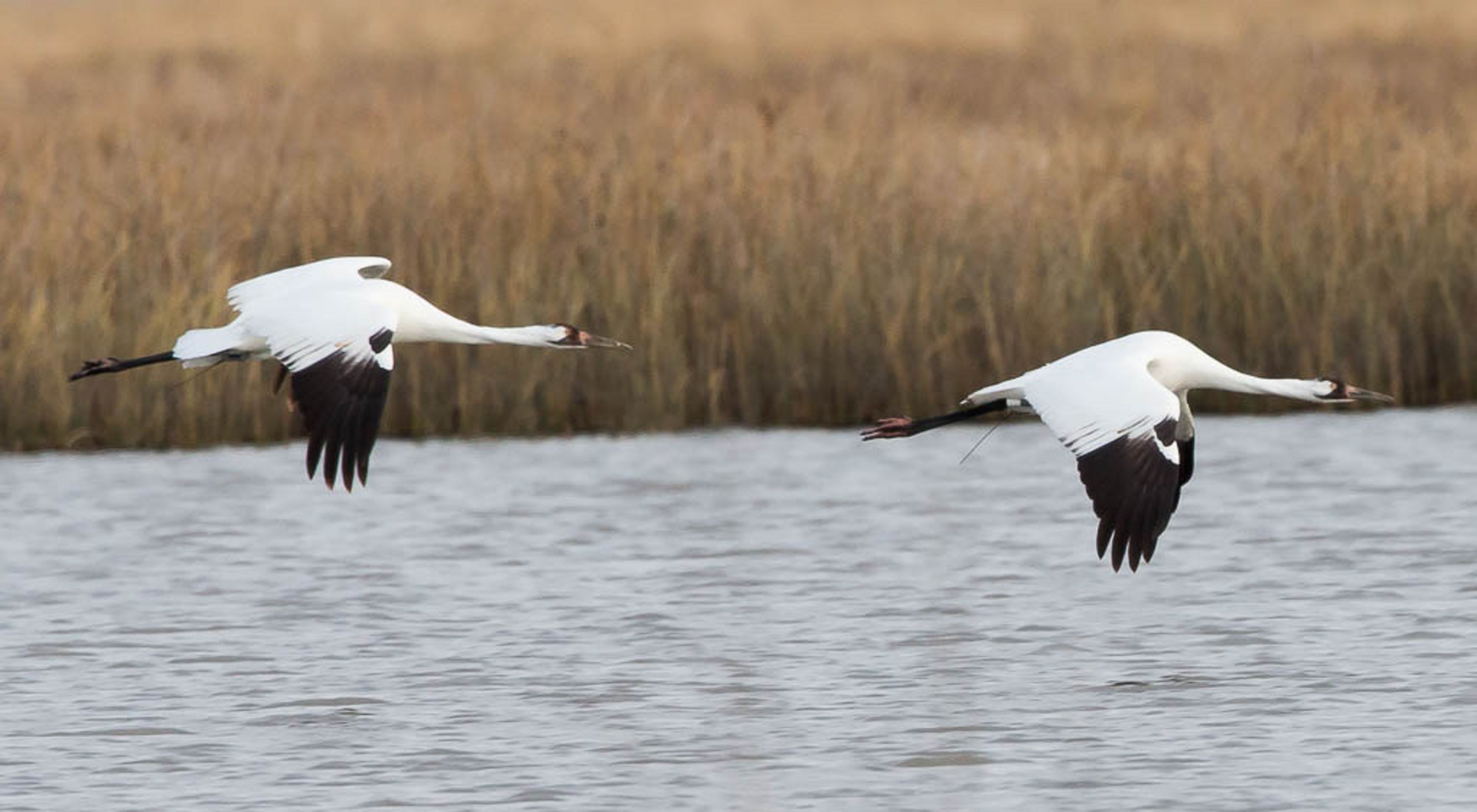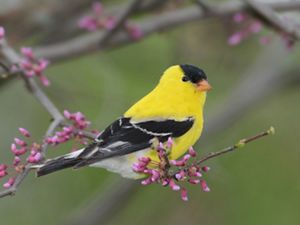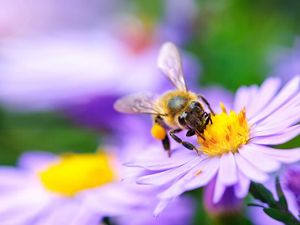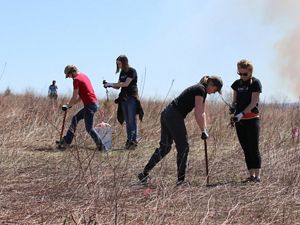Must-See Spring Migratory Birds
Spring means that the animals of the world are in motion to their summer homes and breeding grounds.
Keep in Touch!
Sign up for our monthly Nature News email.
To celebrate spring and the return of our migratory birds, TNC has created a list of the Top Three Must-See Migrations in Wisconsin.
It's spring! And in Wisconsin that means it’s time to shed our winter coats and get outside. The coming of spring also means that many of the birds that spend their summers in Wisconsin are winging their way back here from their wintering grounds farther south.
Many of these birds must make the 600-mile non-stop trip across the Gulf of Mexico to get here. They include such jewels as the ruby-throated hummingbird, scarlet tanager and indigo bunting. Waterfowl like blue-winged teal and waders like spotted sandpiper also migrate over or around the Gulf on their way back to Wisconsin.
The Nature Conservancy is protecting the forests, wetlands and other habitats that these birds need to rest and refuel during their arduous journey.
"The journeys of wild animals are a source of inspiration and remind us that we need to protect nature both locally and globally," said Elizabeth Koehler, director of The Nature Conservancy in Wisconsin. "There are many excellent bird-watching locations throughout the state, and we'd like to share a few of the best places we know of in Wisconsin to see different species of waterfowl, waders and songbirds."

1. Waterfowl
Ducks and geese are among the earliest of Wisconsin's spring migrants, and their numbers can be impressive. Wisconsin's Green Bay is one of the largest freshwater estuaries in the world and is critical habitat for migrating waterfowl particularly the diving ducks like greater and lesser scaup and redheads. Good waterfowl viewing spots along the bay include Barkhausen Waterfowl Preserve, Sensiba State Wildlife Area and the Peshtigo River State Wildlife Area.
Another good place to see these birds and other migrating waterfowl is at the wetlands of the Mink River, protected and managed by The Nature Conservancy, and in adjoining Rowley's Bay at the northern end of the Door Peninsula. Redhead, scaup (both greater and lesser), bufflehead, red-breasted merganser and goldeneye are just some of the ducks that visit this area in March and April.
A good location to see ducks in southern Wisconsin is Lulu Lake, a TNC preserve protecting a pristine kettle lake that attracts waterfowl.
To the west, along the border with Minnesota, is the Upper Mississippi River National Wildlife and Fish Refuge that provides important habitat for migrating canvasback in the spring. Nearly one-third of their North American population—75,000 to 100,000 birds—use Lake Onalaska, a backwater of the Mississippi north of La Crosse, as a springtime staging area.


2. Waders
Ducks and geese are not the only water birds that return to Wisconsin in the spring. Several wetland preserves provide excellent opportunities for watching wading birds, including the largest and rarest in North America: whooping cranes. Whooping cranes were reintroduced at Necedah National Wildlife Refuge in central Wisconsin in 2001 as part of a national effort to establish additional flocks of these critically endangered birds within their historic range. Cranes raised at Necedah were guided on their first migration to wintering grounds in Florida by biologists piloting an ultralight aircraft alongside the birds. The cranes now return to Wisconsin from Florida every April and May.
The wetlands along the east shore of Lake Michigan in northern Door County are another great place to see birds, including waders, during spring and fall migration. Nature Conservancy preserves including Mink River and North Bay-Mud Lake host wading birds as does our Kangaroo Lake Preserve. To get the best looks, we recommend visiting by canoe or kayak. Some of the wading birds you can see include great blue and green herons, black-crowned night herons, sandhill cranes and Virginia and sora rails. Heard but less often seen is the American bittern. If you prefer walking over paddling, head to the Meissner Preserve at Kangaroo, the headwaters to Peil Creek, to see great blue herons, green herons, great egrets and sandhill cranes. Late March to early May is a great time to visit.
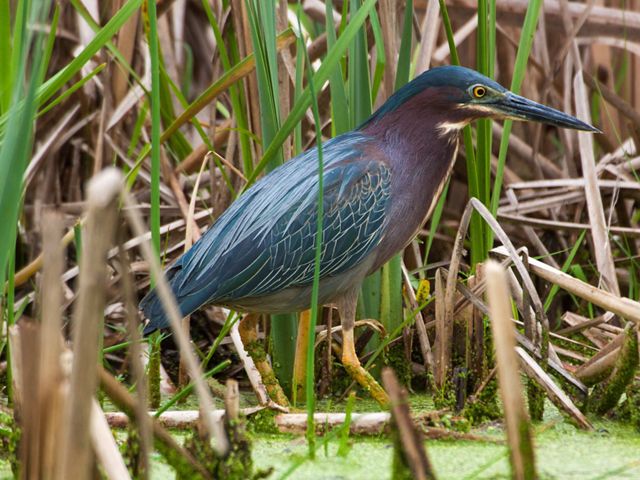
Quote: Elizabeth Koehler
The journeys of wild animals are a source of inspiration and remind us that we need to protect nature both locally and globally.

3. Songbirds
Spring means migrating songbirds for many birdwatchers. Among the earliest grassland songbirds to arrive in the state are eastern meadowlarks at preserves like the Conservancy's Military Ridge Prairie Heritage Area in southwestern Wisconsin. Grassland birds that arrive later in the spring include bobolink, dickcissel and upland sandpiper.
Warblers are perhaps the most colorful and varied of Wisconsin's spring songbird migrants. When and where to look for warblers varies with the timing of the season—warblers eat insects and so depend upon the warm weather that makes their prey abundant. Wooded areas are the best locations for warblers and isolated patches of forest in agricultural areas can concentrate the birds. Baxter's Hollow is an extensive tract of deep forest in Wisconsin's Baraboo Hills that provides important nesting habitat and attracts birds that are rare elsewhere in the state, such as worm-eating and hooded warblers.
Another good location for watching warblers is Wyalusing State Park that overlooks the confluence of the Mississippi and Wisconsin Rivers. The songbird migration here can be outstanding in May—look for many kinds of warblers, vireos, flycatchers and others.
